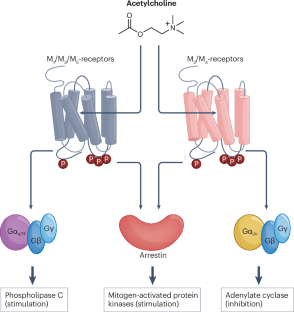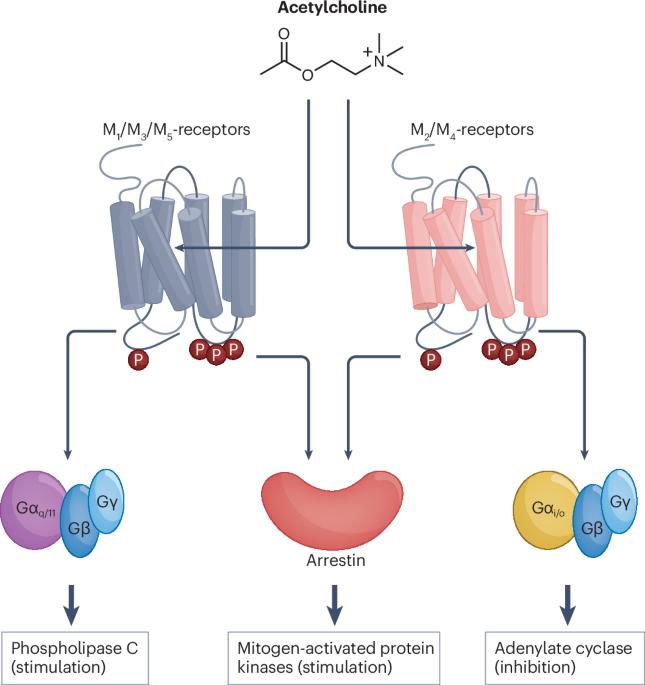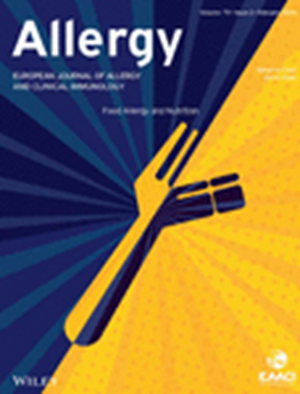A golden age of muscarinic acetylcholine receptor modulation in neurological diseases
IF 12.6
1区 医学
Q1 ALLERGY
引用次数: 0
Abstract
Over the past 40 years, the muscarinic acetylcholine receptor family, particularly the M1-receptor and M4-receptor subtypes, have emerged as validated targets for the symptomatic treatment of neurological diseases such as schizophrenia and Alzheimer disease. However, despite considerable effort and investment, no drugs have yet gained clinical approval. This is largely attributable to cholinergic adverse effects that have halted the majority of programmes and resulted in a waning of interest in these G-protein-coupled receptor targets. Recently, this trend has been reversed. Driven by advances in structure-based drug design and an appreciation of the optimal pharmacological properties necessary to deliver clinical efficacy while minimizing adverse effects, a new generation of M1-receptor and M4-receptor orthosteric agonists and positive allosteric modulators are now entering the clinic. These agents offer the prospect of novel therapeutic solutions for ‘hard to treat’ neurological diseases, heralding a new era of muscarinic drug discovery. The M1 and M4 muscarinic acetylcholine receptors represent promising therapeutic targets for Alzheimer disease and schizophrenia. However, the development of agents targeting these receptors has been limited by their adverse cholinergic effects. Here, Tobin discusses how recent advances in the field — including an increased understanding of receptor biology and signalling, as well as the application of structure-based drug design — are enabling a new generation of muscarinic receptor modulators to enter clinical development.


神经系统疾病中毒蕈碱乙酰胆碱受体调节的黄金时代。
过去 40 年来,毒蕈碱乙酰胆碱受体家族,尤其是 M1 受体和 M4 受体亚型,已成为精神分裂症和阿尔茨海默病等神经系统疾病症状治疗的有效靶点。然而,尽管付出了大量努力和投资,仍没有药物获得临床批准。这主要是由于胆碱能不良反应导致大多数计划停滞不前,并导致人们对这些 G 蛋白偶联受体靶点的兴趣减弱。最近,这一趋势得到了扭转。在基于结构的药物设计的推动下,以及对提供临床疗效同时最大限度减少不良反应所必需的最佳药理特性的认识,新一代 M1 受体和 M4 受体正交激动剂和正异位调节剂正在进入临床。这些药物为 "难以治疗 "的神经系统疾病提供了新的治疗方案,预示着毒蕈碱类药物发现的新时代即将到来。
本文章由计算机程序翻译,如有差异,请以英文原文为准。
求助全文
约1分钟内获得全文
求助全文
来源期刊

Allergy
医学-过敏
CiteScore
26.10
自引率
9.70%
发文量
393
审稿时长
2 months
期刊介绍:
Allergy is an international and multidisciplinary journal that aims to advance, impact, and communicate all aspects of the discipline of Allergy/Immunology. It publishes original articles, reviews, position papers, guidelines, editorials, news and commentaries, letters to the editors, and correspondences. The journal accepts articles based on their scientific merit and quality.
Allergy seeks to maintain contact between basic and clinical Allergy/Immunology and encourages contributions from contributors and readers from all countries. In addition to its publication, Allergy also provides abstracting and indexing information. Some of the databases that include Allergy abstracts are Abstracts on Hygiene & Communicable Disease, Academic Search Alumni Edition, AgBiotech News & Information, AGRICOLA Database, Biological Abstracts, PubMed Dietary Supplement Subset, and Global Health, among others.
 求助内容:
求助内容: 应助结果提醒方式:
应助结果提醒方式:


